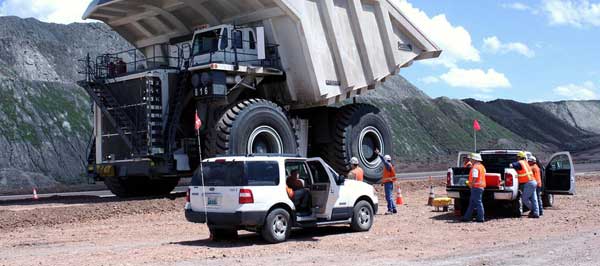REUTERS: Leading global coal miner Peabody files for bankruptcy
Leading global coal producer Peabody Energy Corp BTU.N filed for U.S. bankruptcy protection on Wednesday after a sharp drop in coal prices left it unable to service debt of $10.1 billion, much of it incurred for an expansion into Australia. The Chapter 11 bankruptcy filing ranks among the largest in the commodities sector since energy and metal prices began to fall in mid-2014 as once fast-growing markets including China and Brazil started to slow.
Peabody, the world’s biggest private-sector coal producer, said it expected its mines to continue to operate as usual and said its Australian assets were excluded from the bankruptcy. Continue to the entire article
WALL STREET JOURNAL: Peabody Energy Files for Chapter 11 Bankruptcy Protection
The bankruptcy of St. Louis-based Peabody Energy Corp. came after similar filings by Arch Coal Inc., Alpha Natural Resources Inc., Patriot Coal Corp. and Walter Energy Inc., all of which have recently sought chapter 11 protection.
Those companies have lost a combined $30 billion in stock-market value since 2010, and the coal sector has shed 31,000 jobs since 2009, according to the Mine Safety and Health Administration. No large publicly listed U.S. coal miner has been spared by the forces crushing the coal industry, which include the decline in steel production, the conversion of coal-fired power plants to natural gas, which has become a cheap and abundant thanks to the shale boom, and new environmental regulations. Continue to the entire article
BLOOMBERG BUSINESS: Coal Slump Sends Mining Giant Peabody Energy Into Bankruptcy
Founded in 1883 by 24-year-old Francis S. Peabody with $100, a wagon and two mules, the miner is now the largest private-sector coal company in the world. It joins four other large coal companies that have sought bankruptcy during the slump — a result of tougher environmental policies, a flood of cheap natural gas and a global glut of metallurgical coal that’s dragged prices for the steelmaking component to the lowest in more than 10 years.
“The outlook for coal players remains bleak,” said Sandra Chow, a Singapore-based credit analyst who tracks coal producers at CreditSights Inc. “Any recovery remains a long way from here.”
Peabody, which had revenue of $5.6 billion in 2015 and about 7,100 employees globally, will keep operating during the reorganization, according to court papers. Continue to the entire article
VOX: Why Peabody Energy, the world’s largest coal company, just went bankrupt
It’s not just miners and retirees who could be affected by the bankruptcy. Peabody Energy also has dozens of strip mines and underground coal mines in the West and Midwest that will ultimately need to be rehabbed once the digging stops. Clean-up typically involves restoring the scarred landscape, cleaning up water pollution, making sure there are no toxic metals leaking into nearby streams and groundwater sources.
According to a 1977 federal law, Peabody is technically responsible for cleaning up this mess. That cost has been estimated at around $1.4 billion. But the company could try to wiggle out of some of those obligations in bankruptcy — which could in turn leave taxpayers on the hook for clean-up costs. Continue to the entire article














Comments